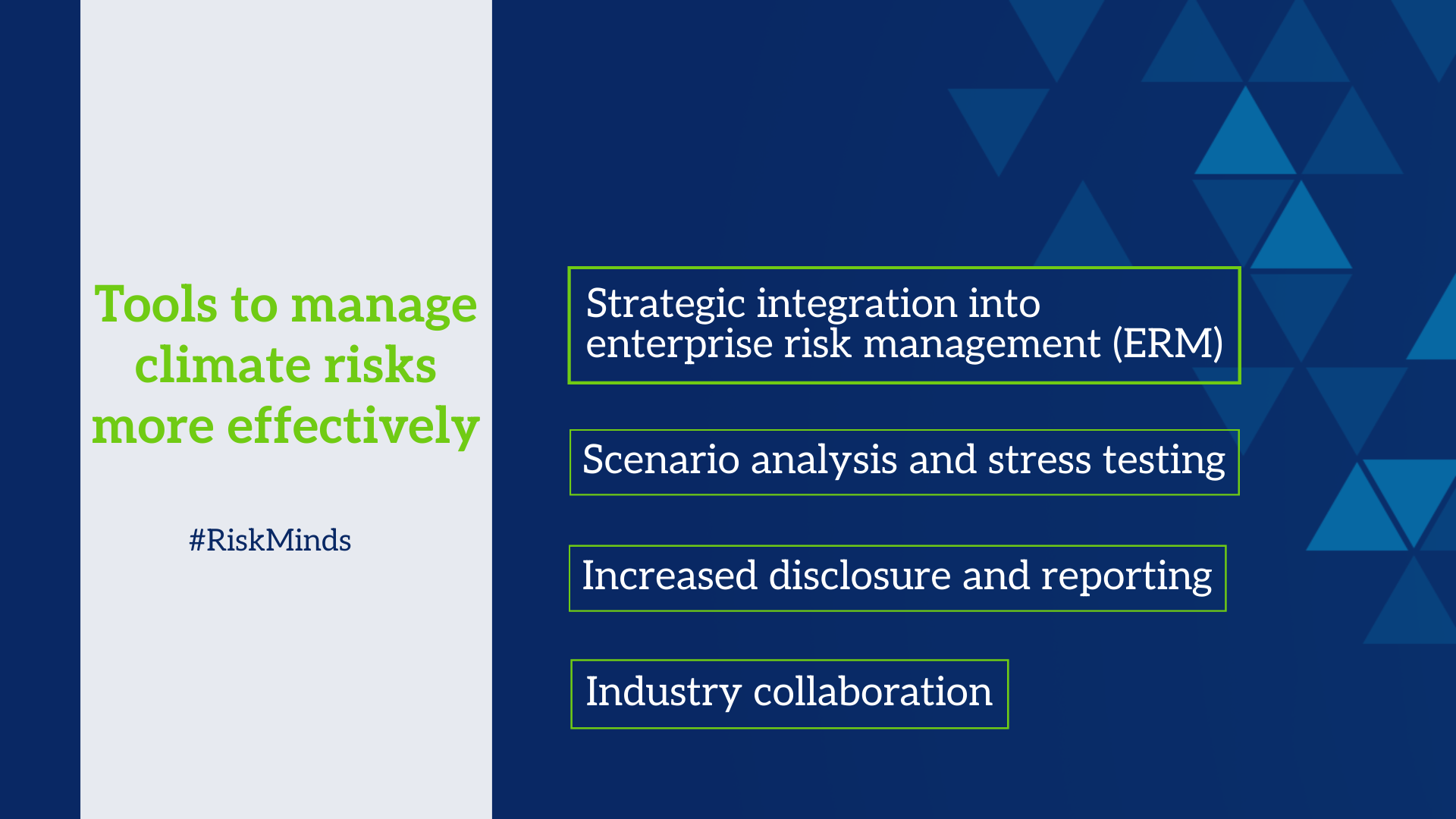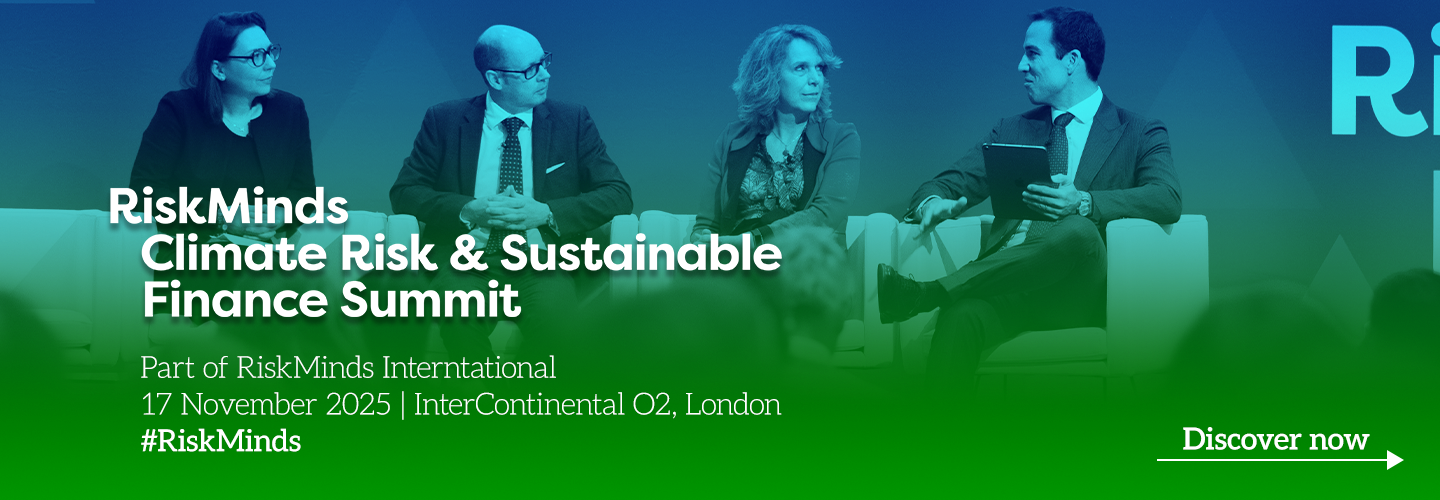A multi-faceted approach to tackling climate risk

Chief Risk Officers are increasingly prioritising and integrating climate-related risks into their overarching risk management frameworks. This shift is driven by growing awareness of the financial implications of climate change, evolving regulatory expectations, and stakeholder pressure. Climate risk, encompassing both physical risks (e.g., extreme weather events) and transition risks (e.g., policy changes, technological advancements, market shifts towards a low-carbon economy), is now recognised as a significant emerging risk capable of impacting businesses, both financially and reputationally.
It is well known that Europe faces the highest temperature increases of any continent, with areas like Scandinavia and southern parts of Europe particularly vulnerable. Last year was the warmest since records began and as the European Environment Agency reports, even under a low emissions scenario (SSP1-2.6), land temperatures could increase by 1.2 to 3.4°C by the end of the century.
In September 2024, catastrophic floods swept across Central Europe, affecting around two million people and causing extensive damage to homes, businesses, and infrastructure. Similarly, floods in Germany in June 2024 resulted in several fatalities and significant economic losses. Devastating flooding in northern China has led to the forced migration of 80,000 people this year. Wildfires have also been a severe problem in Europe. An area larger than Cyprus has burned since January.
These climate events disrupt bank operations through physical damage to branches or data centres and interrupt business continuity, leading to increased operational risk.
A proactive approach is needed
Understandably, CROs are looking at numerous solutions to help keep them on the front-foot. Such is the complexity of climate risk, with its ability to disrupt all facets of the global economy, it necessitates that financial organisations adopt a proactive approach.
Take business and supply chain disruption as one example: CROs who lack enhanced data and analytics to manage vast, often non-traditional datasets (e.g., geospatial data, climate models, ESG data) may lack the ability to model how physical risks could impact supply chains and their customers’ operations, from agriculture to manufacturing. This could reduce customers’ profitability and ability to repay loans, affecting a bank's own operational continuity.
One commercial example is the use of AI-powered platforms like SatSure Sage, who Rabo Partnerships, a subsidiary of the Rabobank Group, chose to partner with two years ago. SatSure Sage combines satellite data and location intelligence to support banks throughout the agricultural loan lifecycle. It ranks villages based on agricultural performance and climate resilience, helping financial institutions optimise loan sourcing.

As well as enhancing data and analytics, financial institutions are embracing other technologies to manage climate risk more effectively. These include:
Strategic integration into enterprise risk management (ERM)
CROs are moving beyond viewing climate risk as a standalone issue, embedding it into the broader ERM framework. This involves identifying, assessing, monitoring, and reporting climate-related risks across all business lines and risk categories.
Scenario analysis and stress testing
Regulators and institutions are increasingly using climate-related scenario analysis and stress testing to understand potential impacts on portfolios, balance sheets, and capital adequacy under different climate pathways.
Increased disclosure and reporting
There is a growing emphasis on transparent disclosure of climate-related financial risks, often aligned with frameworks like the Task Force on Climate-related Financial Disclosures (TCFD). CROs play a key role in ensuring accurate and comprehensive reporting.
Industry collaboration
Financial institutions are engaging in collaborations with industry bodies, climate scientists, and technology providers to share best practices, develop common standards, and access specialised expertise in climate risk assessment.
Stop – collaborate and listen
CROs cannot realistically expect to address climate risks by remaining in ivory towers and limiting idea sharing to the four walls of their respective organisations. Global risks require global perspectives. As a result, financial institutions are taking strides to continually improve their climate risk assessment and mitigation capabilities by pooling resources, sharing expertise, and adopting global standards. Industry bodies, regulators, climate scientists, global consulting groups, technology platforms...they all have a role to play in helping stimulate ideas and share knowledge.
Initiatives like the IFC’s Climate Assessment for Financial Institutions (CAFI) and the Partnership for Carbon Accounting Financials (PCAF) provide harmonised frameworks and tools to measure, report, and verify climate-related impacts across portfolios. These frameworks are also playing an important role in relation to increased disclosure and reporting as CROs find ways to continually improve practices.
Steps taken by the Bank of England’s Prudential Regulation Authority and the European Central Bank to facilitate discussions between CROs, scientists, are advancing the development of practical tools for climate risk management. By bridging gaps in expertise and data, it is enabling institutions to refine their risk assessment capabilities and integrate climate risks more deeply into governance and operational frameworks. Crucially, it allows CROs the opportunity to use advanced modelling to hone the precision of their scenario planning and stress testing that would otherwise be challenging, if not impossible, were they to try to develop them in-house.
In that sense, one of the unintended consequences (or known unknowns to coin Donald Rumsfeld) of climate risk is that CROs are now collaborating more widely with climate scientists, regulators and their peers far more than might otherwise have been the case. They know the risks are material but the precise pathways, timing, and second-order effects are uncertain; hence the need to narrow the ‘unknown’ boundaries.
Combining standardised reporting, expert insight and technology innovation equips CROs to meet increasingly stringent regulatory expectations and investor demands with confidence, making climate risk a central and routinely managed component of financial risk governance.
Emerging climate risk roles
Bridging the talent gap is one of the key challenges that financial organisations face in response to climate risk mitigation. There is a growing need to hire professionals who possess the interdisciplinary knowledge required to effectively manage climate risk, spanning climate science, financial risk management and advanced data analytics.
To further strengthen resilience, some institutions are establishing dedicated climate risk officer roles or teams to lead the integration of climate considerations into risk management. An article by Heidrick & Struggles on this topic, points out that over the past year, we have seen that there are certain experiences and leadership capabilities that culminate to create a successful climate risk officer.
However, the inherent tension between the long-term nature of climate risk and the typically shorter-term focus of financial planning and performance metrics requires careful navigation by global financial institutions to avoid a reactive rather than proactive approach.
Some of the qualities needed for climate risk officers, according to the Heidrick & Struggles article, include:
- Broad portfolio oversight
- Analytical fluency
- Ability to articulate vision and execute strategy
- Regulatory exposure
It’s not only the talent issue that financial institutions must contend with. One of the biggest hurdles is the ability to grapple with a lack of standardised granular data, particularly concerning localised physical risks and the nuanced transition risks across diverse sectors and counterparties.
This data deficit, coupled with inconsistencies in available information, significantly complicates accurate risk assessment and the development of robust analytical models, even as CROs deepen their collaboration efforts with climate experts. System integrations and keeping ahead of the shifting regulations add further complexity, emphasising the need for a multi-faceted risk strategy that integrates climate considerations into investment decisions, due diligence and portfolio management.
Concluding thoughts
Climate risk has firmly established itself as a critical component of financial risk management. And while CROs are making significant strides in integrating these risks, overcoming challenges related to data, methodology, regulatory alignment and talent, will be crucial for building climate resilience. By embedding climate considerations into every facet of decision making, CROs can turn a profound global challenge into an opportunity to future-proof their financial organisations.
Explore the dangers of greenwashing, reputational risk, transition risk, responsible investment, stress testing, modelling, and more at the RiskMinds Climate Risk & Sustainable Finance Summit.
